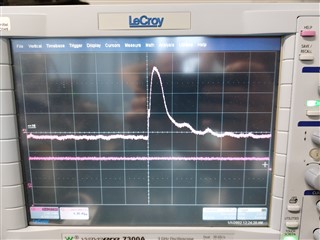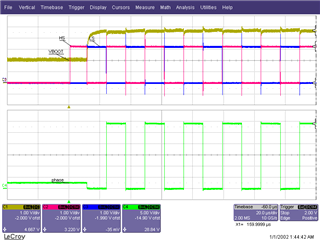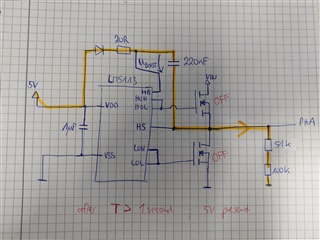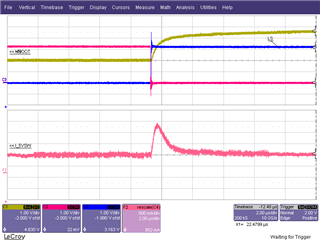Other Parts Discussed in Thread: LMG1205,
Hi together,
we usethree LM5113 in our 3-phase inverter design with EPC2022 GAN-Fets. We do not use any gate-resistors neither for turn-on nor turn-off.
Furthermore we don´t have any filter elements at the gatedriver inputs.
Each Gatedriver is decoupled with 1uF placed direct to the VDD and VSS pins. External Bootstrap-Diodes with 20R series resistor are also placed accoriding to the actual datasheet.
The initial situation at the beginning is as follows: The three gate drivers are supplied from the same 5V rail. Even the bootstrap capacitors are already fully charged since both PWM inputs are driven low and the switching node is high impedant. Bootstrap capacitors are charged, because we have a voltage divider for measurement purpose at each switching node. So bootstrap capacitor charges with enough time over this path when VDD is provided.
We discovered, that when we start commanding the driver with PWM pulses (High-Side ON, Low-Side OFF) the first high-side-ON pulse is somehow ignored from the driver. That behaviour somehow
makes sense to me, since the bootstrap capacitor might not be charged already. So no switching at the output for the first pulse pattern. So far so good.
With the second PWM pulse pattern (High-Side OFF, Low-Side ON), the switching node is driven low, which is fine. Then everything works fine.
The one thing I am wondering about is, that at the moment when we first time turn the Low-Side ON, the three gatedrivers draw a very high inrush current (3A for 300ns) from the 5V rail even they are decoupled by 1uF MLCC (see picture attached). It looks like that there has to be charged some capacitance or so.
So since the bootsrap capacitor is already charged and the total gate charge of the EPC2022 is just about 13nC, where does the high inrush-current (just at the first Low-Side-ON pattern) come from or flow to?
Would you say this behaviour is normal?

Current drawn by thre LM5113 turning on the Low-Side at the same time. Timescale 500ns/DIV, Vertical: 1A/DIV.
Thanks in advance.




